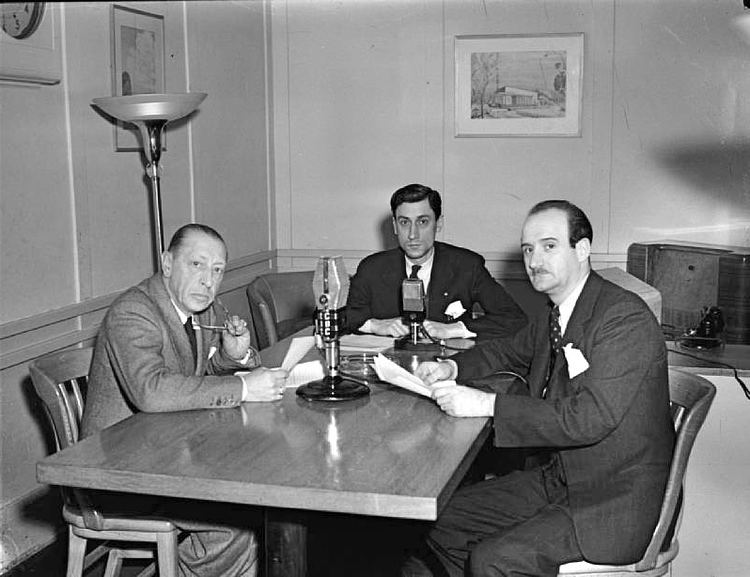 | ||
The Symphony in Three Movements is a work by Russian expatriate composer Igor Stravinsky. Stravinsky wrote the symphony from 1942–45 on commission by the Philharmonic Symphony Society of New York. It was premièred by the New York Philharmonic Orchestra under Stravinsky on January 24, 1946.
The Symphony in Three Movements is considered as Stravinsky's first major composition after emigrating to the United States. It uses material written by Stravinsky for aborted film projects.
In 1943, Stravinsky had begun work on rescoring his ballet The Rite of Spring. Although the project was left incomplete, his revisit to this earlier composition appears to have influenced the symphony. The ostinatos and shock tactics of the last movement, for example, recalls the "Glorification of the Chosen One" and "Sacrificial Dance" from The Rite, and some woodwind passages are reminiscent of the ballet's introduction. On the other hand, there are passages forecasting the opera The Rake's Progress, notably the openings of the slow movement and the finale.
A typical performance of the symphony lasts 20–25 minutes:
- Overture; Allegro (about 10 minutes)
- Andante; Interlude: L'istesso tempo (about 6 minutes)
- Con moto (about 6 minutes)
The symphony is scored for an orchestra of piccolo, 2 flutes, 2 oboes, 3 clarinets in B♭ and A (3rd doubling bass clarinet), 2 bassoons, contrabassoon, 4 horns, 3 trumpets in C, 3 trombones, tuba, timpani, bass drum, piano, harp, violins I & II, violas, cellos, and double basses.
Stravinsky, who rarely acknowledged outside inspirations for his music, referred to the composition as his 'war symphony'. He claimed the symphony as a direct response to events of the Second World War in both Europe and Asia. The first movement was inspired by a documentary on Japanese scorched earth tactics in China. The third movement deals with footage of German soldiers goosestepping and the allied forces' mounting success.
Material is drawn from projects that Stravinsky had abandoned or reorganized. The piano's presence in the first movement stems from a piano concerto that was left incomplete. Music for harp is prominent in the second movement, using themes he had written for the film adaptation of Franz Werfel's novel The Song of Bernadette. Stravinsky was initially informally approached for the writing of the film score. On 15 February 1943 he started writing music for the "Apparition of the Virgin" scene. In the event, no contract was ever signed with him, and the project went to Alfred Newman, who won an Oscar. The third movement unites the first two movements by giving equal emphasis to piano and harp.
In contrast to Stravinsky's earlier Symphony in C, the Symphony in Three Movements is much more turbulent and chromatic. While the Symphony in C is based on abstract ideas, his later symphony makes use of pressing social concerns. From a purely musical standpoint, the Symphony hearkens back to Stravinsky's earlier styles of composition while remaining an outstanding achievement of neoclassicism.
